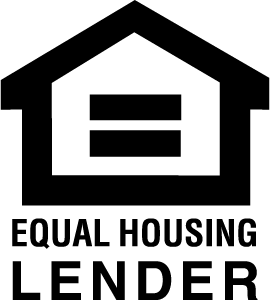
Key insights:
- Sellers have historically high equity, and homes are at historically high prices.
- The market continues to favor sellers despite supply gains and longer market times.
- Sellers can’t name their price; the market sets the home price.
- Sellers don’t get a second chance to make an impact, and pricing a home right from the start is crucial.
- Homes are spending a longer time on the market before selling.
When it comes to real estate market trends, it’s common for consumer expectations to be a little bit behind the reality of market dynamics. That’s why it’s important for buyers and sellers to work with a knowledgeable REALTORⓇ who has access to the latest market data, including hyper-local housing statistics, rather than relying on headlines and hot takes.
Nationally, areas in the South and West are tipping in favor of buyers. But in the Midwest and Northeast, real estate continues to favor sellers, according to information reported by Keeping Current Matters. Here are four realities for today’s sellers in Minnesota and western Wisconsin.
Seller reality #1: Today’s homeowners have record-high equity
At the end of 2024, the average mortgage-holding homeowner had approximately $311,000 in equity, according to Bankrate. Home equity grows when:
- You pay off more of your mortgage (and your home’s value stays steady)
- The market goes up and your home’s value increases (thanks to supply, demand and home price appreciation)
While some homeowners feel compelled to stay put due to a super-low interest rate, the reality is that capitalizing on your home equity and capturing a great price for your current home could mean you’re able to buy a new one that’s a better fit and still a smart financial move. It’s still a seller’s market, with months’ supply well under the 5-6 months needed for market balance.
Seller reality #2: Prices are at record highs, but you can’t name your price
A home is only worth what the market is willing to pay for it. Today’s buyers are discerning. They know the neighborhood and home features they are looking for, and how much they are willing to pay. Their primary focus is not to give you what you want for your home – it’s to pay what they believe your home is worth. Furthermore, record-high prices and interest rates in the 6-7% range have made affordability a key concern for many buyers. The great news is that many of today’s sellers are capturing close to 100% of their list price – and homes are at record-high prices.
Your Edina Realty agent will provide a comparative market analysis, which takes into account your property, the neighborhood and other public record data, to help you set your listing price. Once you know how much your home is worth in today’s marketplace, you can determine if it’s the right time to sell.
Seller reality #3: Inventory is limited, but buyers will move on
Sellers often have an attitude of “let’s try it and see” when it comes to setting their listing price. Many sellers believe a strategy of pricing their home higher will give buyers “room to negotiate down,” but the opposite is true.
Your home gets the most exposure and interest (online and in-person showings) in the first two or so weeks after it’s listed. This is when buyers are searching and adding homes to their list. If they see one that is out of their price range, they will move on. By overpricing your home, you may lose showings and even offers during that critical time.
Seller reality #4: Homes are taking longer to sell
The average time a home spends on the market before selling has been increasing in recent months, averaging in July 2025:
- 40 days in the Twin Cities 16-county metro area, according to the Minneapolis Area Realtors
- 38 days in Minnesota, according to the Minnesota Realtors Association
- 66 days in Wisconsin, according to the Wisconsin Realtors Association
These longer market times are due to growing home inventory, which gives buyers more options, less competition and more time to find the right fit.
Knowing what to expect when it comes to the time your home needs to be market-ready and staged to sell can help you feel confident as a seller, especially as you set your daily cleaning habits to ensure you and your home are always ready for a showing.
Thinking about selling?
The ever-changing market can be difficult to navigate – especially because real estate is hyper-local. Reach out today to get started on the buying or selling process.











 ©2025 Prosperity Home Mortgage LLC®. (877) 275-1762. 3060 Williams Drive, Suite 600, Fairfax, VA 22031. All first mortgage products are provided by Prosperity Home Mortgage, LLC®. Not all mortgage products may be available in all areas. Not all borrowers will qualify. NMLS ID #75164 (For licensing information go to: NMLS Consumer Access at
©2025 Prosperity Home Mortgage LLC®. (877) 275-1762. 3060 Williams Drive, Suite 600, Fairfax, VA 22031. All first mortgage products are provided by Prosperity Home Mortgage, LLC®. Not all mortgage products may be available in all areas. Not all borrowers will qualify. NMLS ID #75164 (For licensing information go to: NMLS Consumer Access at